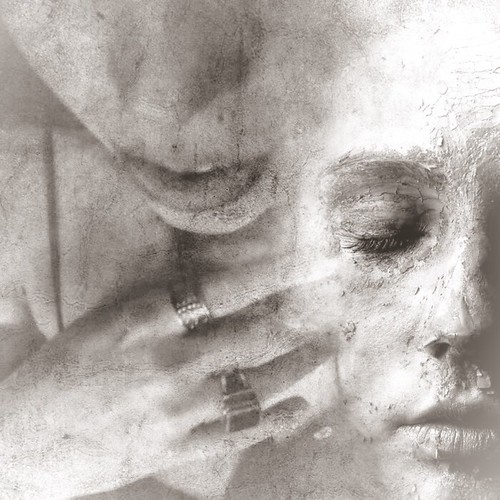I would like to start by quoting excerpts from a recent article in the New York Times, “A Secret War, Strange New Wounds, and Silence from the Pentagon.” by Dave Phillips:
Many U.S. troops who fired vast numbers of artillery rounds against the Islamic State developed mysterious, life-shattering mental and physical problems. . . . (The cannon blasts were strong enough to hurl a 100-pound round 15 miles, and each unleashed a shock wave that shot through the crew members’ bodies, vibrating bone, punching lungs and hearts, and whipping at cruise-missile speeds through the most delicate organ of all, the brain. . . .)
But the military struggled to understand what was wrong.
When Lance Corporal Javier Ortiz came home from a secret mission in Syria, the ghost of a dead girl appeared to him in his kitchen. She was pale and covered in chalky dust, as if hit by an explosion, and her eyes stared at him with a glare as dark and heavy as oil. . . He backed into another room in his apartment near Camp Pendleton in California and flicked on the lights, certain that he was imagining things. She was still there.
The 21-year-old Marine . . .knew that his unit’s huge cannons had killed hundreds of enemy fighters. The ghost, he was sure, was their revenge.”
Deeply disturbed by the apparition that seemed to have followed him from Syria in 2017, but with no one to help him connect any of the dots, such as to suspect brain injury due to the relentless firing of massive artillery, he drew his own conclusion, that the enemy had hexed him. I can only imagine how cornered and frightened he must have felt when he took matters into his own hands, trying to purify himself by building a fire on the beach to which he consigned his combat gloves and deployment journal. But the ghost was still there.
By October 2020, in his visions, ghosts were trying to pull him into another dimension.
In this dimension he has two children, is having trouble keeping a job and struggles to pay his bills. He has debilitating headaches and claims to be losing his memory. He still sees the ghost “and other things”:
There is currently no brain scan or blood test that can detect the minute injuries, Dr. Perl (neuropathologist working for the Defense Department) said; the damage can be seen only under microscopes once a service member has died. So there is no definitive way to tell whether a living person is injured. Even if there were, there is no therapy to fix it . . .
If Ortiz had consulted a shaman he would have received a different diagnosis. One big difference would be, the word “hallucination” would not have come up. But the word “spirit” would have.
Remote killing (whether by firing massive artillery shells at human beings 15 miles away or guided missiles), could actually affect our emotional health more violently than close-up killing, and it is a wonder to me that that wasn’t considered during examination of those distraught, haunted young men. Not everyone was visited by a ghost. Another marine saw a black demon standing by his bed.
Who in our military would be qualified to consider that Ortiz was seeing a ghost and who in the military would be qualified to guide him through a healing . . . to see what the ghost / spirit wanted and respond in some fashion that would allow it / her to return to wherever she heralded from – the bardo? Does the Pentagon hire any shamans ? No allopathic doctor in his right mind would tread there. This kind of work is what shamans do!
When I returned from 12 days in the Peruvian rainforest in 2016, from an intensive retreat working with ayahuasca, I was not quite the same person that went down there. For one thing, I knew that my identity, that is to say, the person I identified with, “Gary Lindorff”, was only a small part of who I was. And the other thing I learned was, spirits are real.
I came back with more / new neuroconnections.
The brain is plastic. (Plastic = originally from the Greek word, “plastikos”, meaning to grow or form, was first used as an adjective meaning “formative.)
Up until 10 years ago it was thought that the brain begins to start losing neural connections after around age 25, and we do lose neurons as we age, but now we know that the adult brain can create new neural connections and even new neurons from neuronal stem cells. In additional to neuronal changes in the gray matter, changes in our white matter (made up of a large network of nerve fibers [axons] that account for the exchange of information and communication) can continue throughout most of life in a healthy brain.
Neuroplasticity is the process by which the brain adapts structurally and functionally as the nervous system responds to intrinsic or extrinsic stimuli, but it also reorganizes its structure, functions or connections after injuries. . . such as trauma or brain injury.
Not everyone sees ghosts, but those who do may not be crazy, they may be special; their brains may be more plastic or adaptive, than, for example, their doctors. A shaman might have been able to help Ortiz to find out why the ghost showed up. Perhaps his brain was irreversibly damaged but it is also possible that his sense of reality was augmented by his injury.
Ortiz, Phillips reports, was other-than-honorably discharged. “‘I gave the Marine Corps everything,’ he said. ‘And they spit me out with nothing. Damaged, damaged, very damaged.’”
All good healers are in some way themselves wounded. Does Ortiz have it in him to become a healer? Sadly, the question is rhetorical. All we can do is speculate.

